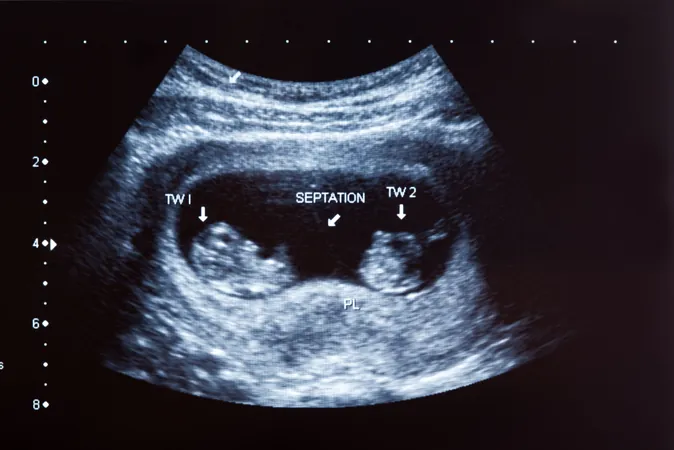
Surprising Research Reveals Twins Grow Slower Than Singletons from 15 Weeks
2025-04-08
Author: Amelia
Key Findings of the Study
The research indicates that twins exhibit reduced fat tissue and muscle mass compared to singletons beginning at 15 weeks. If these findings hold up under further scrutiny, they could play a crucial role in how physicians monitor and manage pregnancies involving twins, potentially leading to better health outcomes for both mothers and their babies.
Background and Study Design
The study focused on dichorionic twin pregnancies, characterized by two separate gestational sacs, and utilized first-trimester ultrasound to establish menstrual ages. Participants were meticulously chosen, with a noted trend in singleton pregnancies showing healthier demographics, such as nonsmoking status and lower body mass index (BMI).
Both cohorts underwent multiple ultrasound scans throughout their pregnancies, with singletons averaging up to five scans and twins up to six, ensuring comprehensive growth monitoring.
Growth Measurements and Results
The researchers compared various growth parameters between twins and singletons, including abdominal area, maximum abdominal subcutaneous tissue thickness (MASCTT), and muscle mass in the thighs. Starting from 15 weeks, twins showed significantly smaller mean abdominal measurements, a disparity that became more pronounced as the pregnancies progressed. For instance, the difference in abdominal area jumped from just 37.6 mm² at 15 weeks to an astonishing 480.5 mm² by 37 weeks.
Similar trends were evident in thigh measurements, with twins registered as having smaller thigh volumes throughout the gestation period. The difference in thigh fat volume was significant, further highlighting the developmental disparities between twins and their singleton counterparts.
Implications of the Findings
The implications of this research are profound. With an average gestational age at delivery of 35.2 weeks for twins versus 39.2 weeks for singletons, the data suggests that healthcare providers may need to adopt new strategies for monitoring twin growth more closely, as early differences could set the stage for potential complications later in pregnancy.
Conclusion
This study underscores the necessity of understanding the unique growth patterns of twins. As researchers noted, the growth differences may emerge earlier than previously believed, challenging the traditional views held about twin pregnancies. With continued research, these insights can pave the way for improved monitoring and care, ensuring that twin pregnancies are supported with the attention they require.









 Brasil (PT)
Brasil (PT)
 Canada (EN)
Canada (EN)
 Chile (ES)
Chile (ES)
 Česko (CS)
Česko (CS)
 대한민국 (KO)
대한민국 (KO)
 España (ES)
España (ES)
 France (FR)
France (FR)
 Hong Kong (EN)
Hong Kong (EN)
 Italia (IT)
Italia (IT)
 日本 (JA)
日本 (JA)
 Magyarország (HU)
Magyarország (HU)
 Norge (NO)
Norge (NO)
 Polska (PL)
Polska (PL)
 Schweiz (DE)
Schweiz (DE)
 Singapore (EN)
Singapore (EN)
 Sverige (SV)
Sverige (SV)
 Suomi (FI)
Suomi (FI)
 Türkiye (TR)
Türkiye (TR)
 الإمارات العربية المتحدة (AR)
الإمارات العربية المتحدة (AR)